When we celebrate the discovery of America by Christopher Columbus on Columbus Day, we should also be celebrating Columbus’s discovery of the potato. More accurately, Columbus’s introduction of the potato from the New World to the Old World. This introduction of New World foods to Europe and the east is known as the “Columbian Exchange”.
The potato, and other native American plants “…transformed cultures, reshuffled politics and spawned new economic systems that then, in a globalizing feedback loop, took root back in the New World as well.” This quote is from an article in the Washington Post on October 8, 2018, titled “Christopher Columbus and the Potato that Changed the World.” The article is by Steve Hendrix.
An example of the potato’s earth-shattering impact is that it helped eliminate famines and fueled a population boom in parts of northern Europe. This made urbanization possible which, in turn, fueled the Industrial Revolution. This population explosion also helped several European nations assert dominion over the world from 1750 to 1950. Thus the potato is also responsible for the rise of Western Europe and its colonies, including America.
But let’s get back to the initial introduction of the potato to skeptical Europeans. The potato spread slowly. At first, it was viewed with suspicion and plagued by misinformation. Initially, some people claimed that the potato was an aphrodisiac. Others believed that it could cause leprosy. When Sir Walter Raleigh brought potatoes into the Elizabethan court, the courtiers tried to smoke the leaves!
It took a while for people to realize what a nutritional bonanza the potato is. It’s filled with complex carbohydrates, amino acids, and vitamins. It is a nutritionally complete diet when paired with milk. It also took time for people to take advantage of the superior productivity and sturdiness of the potato over other agricultural products, like grains.
In the 1600’s, Europeans finally figured out how to successfully cultivate potatoes. The effect was dramatic – the population of places like Ireland, Scandinavia, and other northern regions, increased up to 30%. In a 1744 famine in Prussia, King Frederick the Great ordered his farmers to grow potatoes and ordered the peasants to eat them!
Famines were prevalent in Europe. France had 40 nationwide famines between 1500 and 1800 as well as hundreds and hundreds of local famines. England suffered 17 national and regional famines just between 1523 and 1623. The world could not reliably feed itself.
Enter the potato. Because potatoes are so productive, once everyone started planting them, they became a diet staple. In terms of calories, they effectively doubled Europe’s food supply. For the first time in Western European history, the food problem was solved. By the end of the 18th century, famines almost disappeared in potato country. Before the potato, European living and eating standards were equivalent to today’s Cameroon or Bangladesh.
Another benefit of the potato is that it is easily portable and stays edible for a relatively long time. So potatoes could easily be transported to the cities, fostering their growth. This created an urban factory workforce. Hence, the Industrial Revolution.
In the mid-1700’s, a French man named Antoine-Augustin Parmentier took it upon himself to launch a PR campaign on behalf of the potato. He created publicity stunts to draw attention to his miracle product. For example, he presented an all potato dinner to high society guests. One of them, it is claimed, was Thomas Jefferson. Parmentier also convinced the King and Queen to be seen wearing potato blossoms. His biggest stunt was to plant 40 acres of potatoes at the edge of Paris, knowing that the starving population would steal and eat them.
The potato took such firm root in Europe that by the end of the 18th century, roughly 40% of the Irish people ate no solid food other than potatoes. That was also true of 10-30% of other countries like Belgium, the Netherlands, Prussia, and Poland.
In the mid-1800’s, catastrophe struck. Blights started wiping out the potato crops. In 1845, in Ireland alone, one half to three-quarters of a million acres of potatoes were wiped out. The following years, up until 1852, were even worse. The Great Potato Famine was one of the worst in history in terms of percentage of population lost. Over a million Irish died. A similar famine in the U.S. today would kill 40 million people!
Within a decade, over two million people fled Ireland, over three-quarters of whom came to the United States. That changed the history and demographics of the U.S. And it began the phenomenon of the Melting Pot.
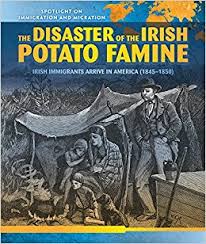 A major commemoration of the potato exists in Germany. A statue of Sir Francis Drake was erected in 1853, although Drake did not, in fact, introduce the potato into Europe. The statue depicts Drake with his right hand on his sword and his left hand holding a potato plant. On the base is the following inscription:
A major commemoration of the potato exists in Germany. A statue of Sir Francis Drake was erected in 1853, although Drake did not, in fact, introduce the potato into Europe. The statue depicts Drake with his right hand on his sword and his left hand holding a potato plant. On the base is the following inscription:
Sir Francis Drake
Dissemination of the potato in Europe
In the year of our Lord 1586.
Millions of people
Who cultivate the earth
Bless his immortal memory.
So, as Steve Hendrix said in the Washington Post, “…a small round object sent around the planet … changed the course of human history.”

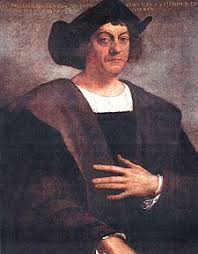
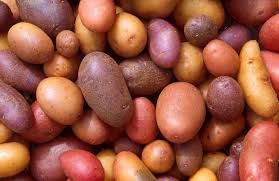
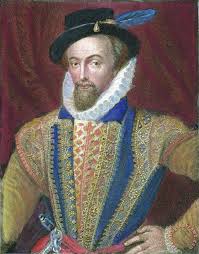
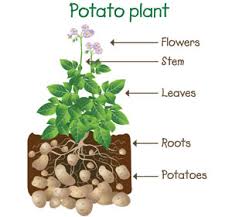
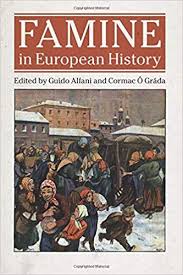
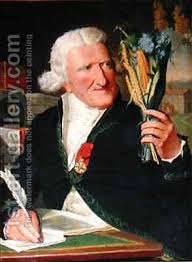
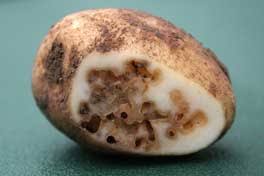
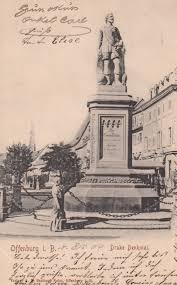

Reblogged this on Genesis our Evolution and commented:
A small round object sent around the world … changed the course of human history…
LikeLike
Fascinating! The humble potato grew new roots! 🙂
LikeLike
Check out the documentary “How Beer Saved the World”. It shows how beer did as much to change history as the potato did. And the documentary is well done and very funny! Look it up online.
LikeLike
I definitely will, thank you 🙂
LikeLike
I love potatoes. Isn’t it true that England had a hand in not helping Ireland during the potato famine?
LikeLike
https://www.google.com/amp/s/www.irishcentral.com/news/top-british-journalist-shocked-to-discover-nations-guilt-over-irish-famine.amp
LikeLike
It’s very true. There were individuals who tried to help, but there really wasn’t any food. It was a genuine famine. Their dependence on the potato also had allowed them to make farms very small. When the blight hit, there were no extra acres to grow something else. The British were about as helpful to the Irish as the U.S. was to Puerto Rico after Maria. Which is to say, NOT.
LikeLiked by 1 person
Exactly. How do we allow such unkindness to rule. :(. But if m like you. I’ll speak about it but can’t do much.
LikeLike
Good point, Marilyn. There was nowhere to start growing other crops when the potatoes were killed. So all other people could do was bring in a few meals here and there. The agricultural problem couldn’t be solved so the famine continued unabated.
LikeLike
See the link I posted.
LikeLike
The Irish, in an attempt to be “fair” kept cutting up their farms into smaller and smaller segments. It might have been “fair,” but it made farming of anything but potatoes and family-sized amount of produce impossible. The big acreage was owned by the English conquerors. The combination of English ownership of the best land — and most of the money — and the massive size of the famine changed the world. By the end of the famine, there were more Irish NOT in Ireland than IN Ireland.
LikeLike
I don’t know about England’s role in the potato famine. The articles I read didn’t talk about that. But it sounds plausible that neighbors would help each other out.
LikeLike
There are quite a few books on the subject. The one that really stuck with me was “The Great Hunger,” which delved into the politics as well as the famine itself.
LikeLike
Wow! The humble potato has quite a history. I had no idea the famine in the 1800s was so widespread. The Irish side of my family in all likelihood fled to the island of Madeira and then to Mozambique. How different it could’ve been had they gone to the US. Thanks for posting.
LikeLike
The Irish potato famine was so widespread and devastating thaat it uprooted whole populations and reshaped the demographics of the west. The Irish apparently spread out all over europe and elsewhere in addition to coming to the U.S.
LikeLike
I love potatoes, baked, roasted, cut up for wedges or chips or boiled and mashed. They are all good. I think it was a rather generous to commemorate Drake though as he was basically a pirate.
LikeLike
Lots of people are clelbrated in history for things they didn’t do – and what they did do is often forgotten! It depends on who gets to write the history!
LikeLiked by 1 person
My mother didn’t believe any meal was complete without two kinds of potatoes. She LOVED potatoes and Jewish cookbooks are full of potato recipes. Like most poor people, potatoes got us through the long, cold winters. I still have an abiding affection for potato kugel.
LikeLiked by 1 person
There are so many great potato recipes! Tom likes a baked potato seasoned with
onion and garlic powder and a few dried herbs and salt and pepper. He often puts it on the grill and adds some butter and it’s delicious.
LikeLike
One of my favorite foods!
LikeLike
The potato is versatile in the kitchen as well as being easy to grow and fully nutritious. It’s the full package! My husband eats potatoes almost every night. I’m a pasta girl but I’m always dieting, so I don’t eat starches with most meals, except bread, which is my favorite food.
LikeLiked by 1 person
I love the humble spud. Amazing how one crop can change so much.
LikeLike
There is an amazing documentary called “How Beer Saved the World” that you should see. Beer had the same outsized, mind blowing effect on human history as the potato. It is amazing how one thing can have such far reaching domino effects all over the world!
LikeLiked by 1 person
Oooh, I’ll definitely check that out. Same with coffee
LikeLike